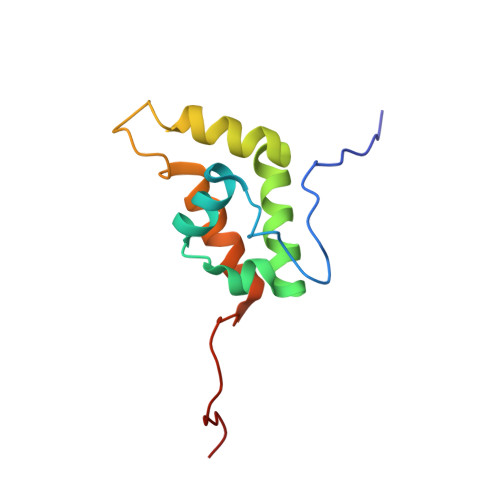Autoinhibition and activation mechanisms of the Wiskott-Aldrich syndrome protein.
Kim, A.S., Kakalis, L.T., Abdul-Manan, N., Liu, G.A., Rosen, M.K.(2000) Nature 404: 151-158
- PubMed: 10724160
- DOI: https://doi.org/10.1038/35004513
- Primary Citation of Related Structures:
1EJ5 - PubMed Abstract:
The Rho-family GTPase, Cdc42, can regulate the actin cytoskeleton through activation of Wiskott-Aldrich syndrome protein (WASP) family members. Activation relieves an autoinhibitory contact between the GTPase-binding domain and the carboxy-terminal region of WASP proteins. Here we report the autoinhibited structure of the GTPase-binding domain of WASP, which can be induced by the C-terminal region or by organic co-solvents. In the autoinhibited complex, intramolecular interactions with the GTPase-binding domain occlude residues of the C terminus that regulate the Arp2/3 actin-nucleating complex. Binding of Cdc42 to the GTPase-binding domain causes a dramatic conformational change, resulting in disruption of the hydrophobic core and release of the C terminus, enabling its interaction with the actin regulatory machinery. These data show that 'intrinsically unstructured' peptides such as the GTPase-binding domain of WASP can be induced into distinct structural and functional states depending on context.
- Cellular Biochemistry and Biophysics Program, Memorial Sloan-Kettering Cancer Center, New York, New York 10021, USA.
Organizational Affiliation:
















